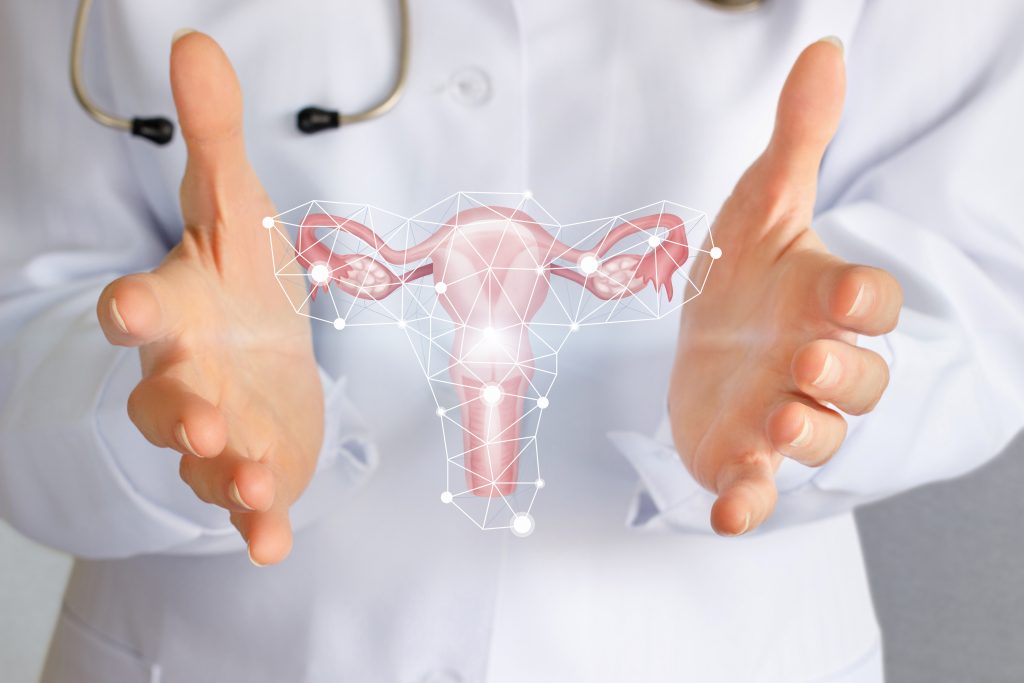Endometrial Ablation: A Minimally Invasive Hysterectomy Alternative
Posted By:

Dr. Michael Coyle, DO FACOOG, FPMRS

For women who suffer from abnormal or heavy uterine bleeding and don’t plan to conceive, endometrial ablation may be a minimally invasive alternative to having a hysterectomy. Ablation involves using cold, heat, or certain types of energy to remove or scar a layer of the endometrial lining of the uterus. With less uterine lining, there is less bleeding during your period because there is less material to shed.
At Coyle Institute, we offer a number of options for endometrial ablation, including NovaSure®—one of the least invasive ablation options. Take a look at everything you should know about endometrial ablation, how it works, what to expect during recovery, and more.
First, Why Endometrial Ablation May Be Recommended
Endometrial ablation is most often recommended for women between the ages of 35 and 45 who struggle with long or heavy periods. You may have a long or heavy period if your period lasts longer than seven days or is so heavy that it affects daily activity or causes issues with anemia. However, the procedure may also benefit those who deal with abnormal uterine bleeding like bleeding between periods or other issues.
Individuals are usually considered a good candidate for ablation if:
- They do not intend to have children in the future
- They do not have underlying conditions that cause heavy bleeding, such as uterine fibroids
- They have continued to deal with heavy bleeding after trying other options, such as medication or hormone therapy
Not all women are good candidates for endometrial ablation. Women who have already reached menopause, have an abnormally shaped uterus, or have undergone prior uterine surgeries may not be suitable for the procedure.
A Closer Look at Endometrial Ablation
Endometrial ablation is considered to be minimally invasive because it is not a surgical procedure. The tools used can be inserted either laparoscopically through a tiny incision in your abdomen or by direct access to the uterus through the vaginal opening.
There are several ways endometrial ablation can be performed, including:
- Radiofrequency ablation – A mesh is inserted into the uterus and releases radio waves to heat and remove the lining
- Microwave ablation – Microwaves sent into the uterus using a small instrument heat and destroy the endometrial lining
- Hydrothermal ablation – Saline fluid is pushed into the uterus and then heated to a degree high enough to destroy the uterine lining
- Cryoablation – A small tube is inserted into the uterus that releases small balls of ice to freeze and destroy the lining
- Balloon therapy ablation – A balloon is placed inside the uterus, filled with heated fluid; the hot, expanded balloon destroys the lining it touches
Some of these procedures require general anesthesia to keep you asleep and comfortable, while others will only require something like epidural or spinal anesthesia so you are awake but your pelvic region is numb. In any case, the procedure usually only lasts from a few minutes up to about 20 minutes and you should not feel any pain or severe discomfort.
Call Coyle Institute at 850-637-8258 about hysterectomy alternatives.
Endometrial Ablation vs Hysterectomy – Which Is Better?
Because the uterus and other reproductive organs are left intact with endometrial ablation, ablation is often considered a better option than a hysterectomy. Recovery times after ablation are far shorter and there are fewer risks associated with the recovery process.
While endometrial ablation may offer help for heavy or abnormal bleeding, if the procedure is not effective, a hysterectomy may still be recommended. Endometrium can regenerate over time. Therefore, a hysterectomy may be more likely if you have an ablation before the age of 45. About half of the women who have ablation before 45, have a tubal before ablation, and experience severe menstrual pain prior to the procedure will get a hysterectomy within 5 years.
Know your options and live the life you want.
Schedule an Appointment TodayPotential Downsides of Ablation to Consider
A few potential downsides of ablation to reduce uterine lining include:
- A hysterectomy may still be recommended later if problems persist
- Endometrial ablation is not the best option if you are under the age of 45
- Pregnancy after ablation is extremely risky and long-term contraception methods must be considered
Recovery from Endometrial Ablation – What to Expect
The recovery after endometrial ablation may look different depending on which type of procedure was performed. For surgical ablation that involves general anesthesia, a spinal, or an epidural, you will be in recovery until your vitals stabilize. At this point, you will likely be released to go home. If your procedure does not involve anesthesia, you will likely stay at the hospital or treatment center for a few hours and then be released to go home.
Symptoms during the first few days of recovery can include:
- Cramping
- Nausea
- Frequent urination
- Vaginal bleeding or watery discharge
It is always best to take a few days to rest after the procedure, but activity restrictions can be different depending on the type of procedure. Some women experience a bit of spotting or watery, bloody discharge for a few weeks.
Be sure to avoid sex, tampons, and douching for two or three days after ablation, or as instructed by your treatment provider.
Do Periods Come back after Endometrial Ablation?
Most women continue to have a period after ablation, but their bleeding is much lighter. About a third will no longer have a period or their period will return later. Contrary to popular myth, endometrial ablation will not affect your weight even if you stop having a period.
Can You Get Pregnant after Endometrial Ablation?
Pregnancy after ablation is considered risky. Ablation breaks down the uterine lining, but it does not prevent ovulation. Therefore, you may still continue to ovulate and you can get pregnant if ovulation continues. However, when the newly formed embryo tries to implant into the uterine lining, the scarred lining can prevent proper implantation. Therefore, there is a greater risk of complications during pregnancy or miscarriage. Many women opt to have a tubal ligation after ablation or use contraceptives for the long term to prevent pregnancy.
Learn More about Endometrial Ablation Options at Coyle Institute
For people who struggle monthly with heavy, abnormal menstrual flow that interferes with their ability to live a normal life, endometrial ablation can be a life-changing procedure. At Coyle Institute, we focus on helping every patient achieve the highest quality of life with procedure options that work best for them. If you would like to know more about endometrial ablation, reach out to the team at 850-637-8258 to schedule an appointment.
